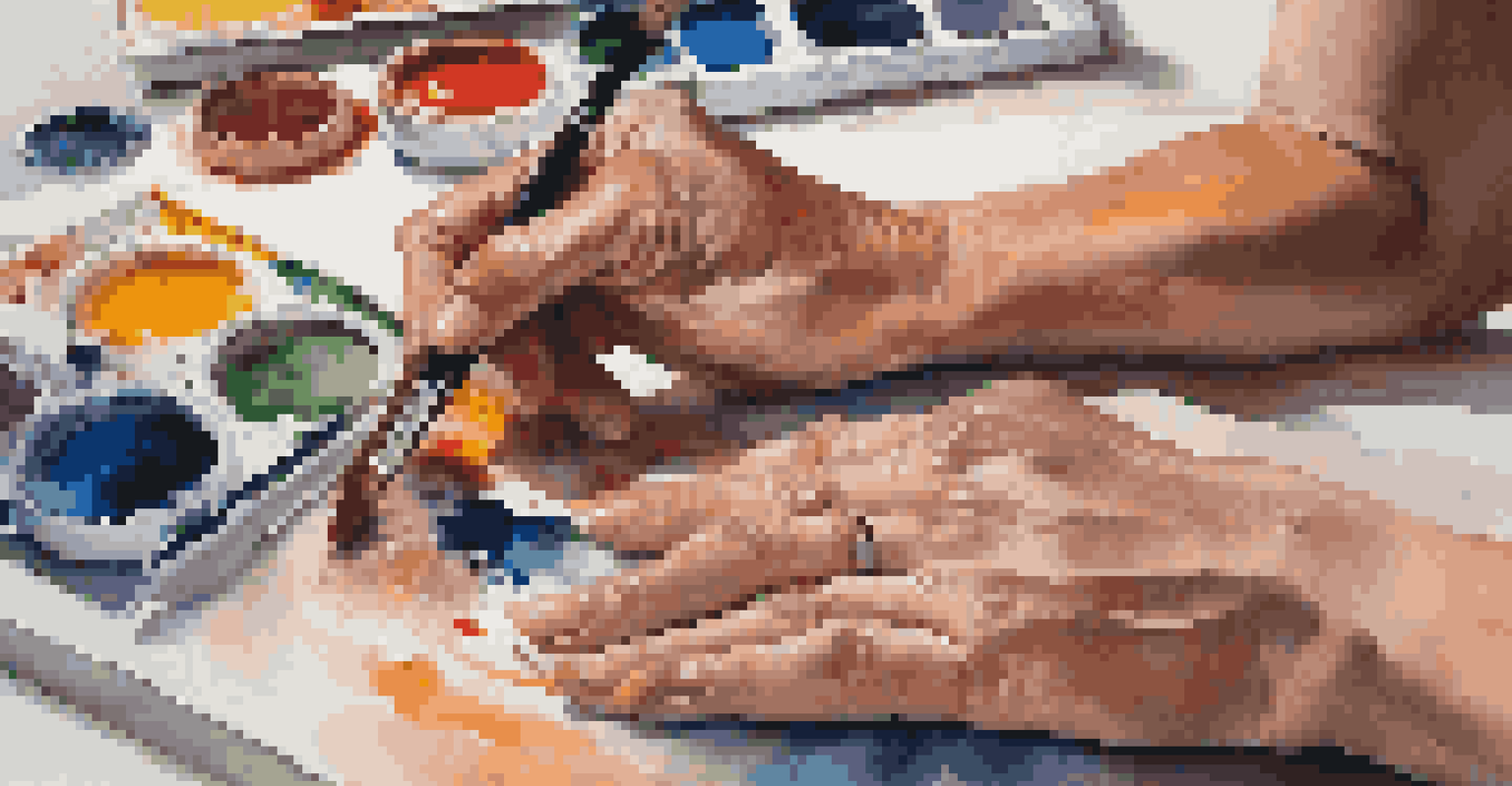The Role of Philanthropy in the Global Art Landscape

Understanding Philanthropy in the Art World
Philanthropy in the arts refers to the charitable giving that supports artistic endeavors, institutions, and artists. It plays a crucial role in funding exhibitions, preserving cultural heritage, and supporting emerging talent. By providing financial resources, philanthropists help ensure that art remains accessible, diverse, and vibrant across the globe.
Philanthropy is not just about giving money; it's about giving your time, energy, and expertise to help others.
These contributions can come from individuals, corporations, or foundations, and they often target specific projects or organizations. For example, a wealthy collector might donate a significant sum to a museum to fund a special exhibition. This not only enriches the cultural landscape but also fosters a deeper appreciation for the arts among the public.
Moreover, philanthropy helps bridge gaps in funding that governments or institutions may not cover. In many cases, artists rely on grants and donations to bring their visions to life, highlighting the essential support that philanthropy provides in the creative sector.
The Influence of Major Art Patrons
Art patrons have been pivotal in shaping the art world for centuries, from the Medici family in Renaissance Italy to contemporary collectors like Eli Broad. These individuals often have a personal connection to art and use their wealth to support artists and institutions they believe in. Their influence can dramatically alter the trajectory of an artist's career or an art movement.

For instance, when a major patron endorses an artist, it often leads to increased visibility and sales for that artist. This kind of support can transform a budding talent into a recognized name in the art community. Just think of how often we hear about artists receiving grants or commissions from notable collectors, which catapults them into the spotlight.
Philanthropy Fuels Artistic Growth
Charitable giving supports artistic endeavors, ensuring that art remains accessible, diverse, and vibrant worldwide.
Additionally, the legacy of these patrons often extends beyond their lifetimes. Many establish foundations or funds that continue to support the arts, ensuring that their commitment to creativity lives on. This long-term impact illustrates the profound influence of art patrons in the global art landscape.
Philanthropy and Cultural Institutions
Cultural institutions, such as museums and galleries, heavily rely on philanthropic support to thrive. These organizations often face financial challenges, and donations can mean the difference between survival and closure. Philanthropy enables them to curate exhibitions, acquire new artworks, and maintain their facilities, making art accessible to the public.
Art is not a thing; it is a way. Philanthropy makes it possible for art to thrive and reflect the diversity of our world.
For example, the Guggenheim Museum in New York has received significant funding from various philanthropists, which has allowed it to expand its outreach and programming. This type of support not only enhances the museum's offerings but also fosters community engagement and education in the arts.
Moreover, philanthropic funding often encourages institutions to take risks on innovative projects or emerging artists. This willingness to support new ideas can lead to groundbreaking exhibitions that challenge traditional art narratives, reflecting the dynamic nature of the art world and its ability to evolve.
Supporting Underrepresented Artists
One of philanthropy's most significant contributions to the arts is its role in supporting underrepresented artists. Many philanthropic initiatives focus on providing resources and visibility for marginalized communities, helping to amplify their voices in the art world. This support not only enriches the artistic landscape but also fosters diversity and inclusion.
For instance, organizations like the Joan Mitchell Foundation offer grants and residencies specifically for artists of color and those from disadvantaged backgrounds. By prioritizing these groups, philanthropy plays a vital role in addressing inequities that have historically existed within the arts.
Patrons Shape Artists' Futures
Major art patrons significantly influence the careers of artists, often transforming emerging talents into recognized names.
Additionally, by showcasing the work of underrepresented artists, philanthropists help challenge the dominant narratives in the art world. This not only broadens perspectives but also encourages dialogue about cultural identity, representation, and the importance of diverse artistic expressions.
The Role of Corporate Philanthropy
Corporate philanthropy has emerged as a powerful force in the global art landscape. Companies often engage in charitable giving to enhance their brand image and foster community relations. By supporting artistic initiatives, businesses can demonstrate their commitment to social responsibility while simultaneously reaping marketing benefits.
For example, corporations like BMW have sponsored contemporary art events and exhibitions, aligning their brand with creativity and innovation. This not only helps to promote their products but also positions them as champions of the arts, appealing to consumers who value corporate responsibility.
Moreover, corporate sponsorships can provide substantial funding for large-scale projects that might not be feasible otherwise. These partnerships can lead to exciting collaborations between artists and businesses, resulting in unique art experiences that captivate audiences and elevate the art scene.
The Impact of Digital Philanthropy
In today's digital age, philanthropy has taken on new forms, particularly through online platforms and social media. Crowdfunding has become a popular way for artists to raise funds for projects, allowing them to connect directly with supporters. This shift has democratized the funding process, giving more artists the opportunity to bring their visions to life.
Platforms like Kickstarter and GoFundMe have empowered creators by allowing them to share their stories and attract contributions from a global audience. This not only provides financial support but also creates a sense of community around artistic endeavors, fostering a shared investment in the arts.
Digital Platforms Enhance Funding
Crowdfunding and digital philanthropy empower artists to connect directly with supporters, democratizing the funding process.
Additionally, digital philanthropy allows for greater transparency and accountability, as donors can track how their contributions are used. This builds trust between artists and supporters, encouraging ongoing engagement and investment in the arts, ultimately enriching the global art landscape.
Challenges in Art Philanthropy
Despite the positive impacts of philanthropy in the arts, there are challenges that must be addressed. One significant issue is the reliance on a small number of wealthy donors, which can lead to imbalances in funding distribution. This concentration of power can result in certain narratives or artists being favored over others, limiting diversity in artistic expression.
Moreover, the motivations behind philanthropic giving can sometimes skew priorities. Donors may have specific agendas or preferences that influence the types of projects funded, which might not align with the broader needs of the art community. This can create tension between artists seeking independence and donors wishing to steer the direction of their support.

Lastly, the sustainability of philanthropic funding is an ongoing concern. Economic downturns or shifts in donor priorities can lead to a decrease in available resources, putting many artistic initiatives at risk. Addressing these challenges is essential to ensure that philanthropy continues to play a vital role in the global art landscape.